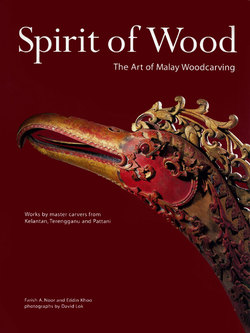Читать книгу Spirit of Wood - Farish Noor - Страница 8
На сайте Литреса книга снята с продажи.
ОглавлениеForeword
Like most Kelantanese of my generation, I grew up with an intimate understanding of the arts and traditions that are unique to the east coast states of Peninsular Malaysia. Batik printing, songket (gold thread) weaving and wood-carving were not regarded as handicrafts or mere decorative items during our childhood but were an integral part of our daily lives. These traditional arts were imbued with the essence of our cultural identity. Every family possessed a keris, for instance, not as a weapon but as a symbol of its ancestry, to be passed down to future generations. For many families on the east coast states of Kelantan and Terengganu, this ancestry is believed to have its roots in Langkasuka, the legendary kingdom that purportedly flourished in Southeast Asia from the second to the sixteenth centuries.
It is deeply heartening to know that there are young men and women from Kelantan and Terengganu who share my pride in our cultural traditions, and that the impetus towards modernization which has swept through Malaysia since Independence in 1957 has not erased our unique cultural identity. Young artists such as Nik Rashiddin Nik Hussein (who tragically died after a short illness in 2002) and Norhaiza Noordin hold the key to the future as they are striving not just to perpetuate their art but also to preserve the traditions that gave birth to the art in the first place.
This book is the first step in what I see as a movement to restore the prestige of traditional east coast Malay arts. It is not only important as a record of an ancient art form that has survived through the centuries, but as a platform for key ideas about traditional east coast Malay culture and history. Even to the untrained eye, it will be evident that the artefacts featured in this book were produced not by craftsmen but by artists who were expressing not just their artistic vision but also the cultural vision of a highly developed civilization. While I am certain that Spirit of Wood will revive interest in traditional Malay arts and crafts, it is my hope that it will also serve as a springboard for further scholarship in the various traditional art forms that recall similar origins in Langkasuka.
YTM TENGKU RAZALEIGH HAMZAH
A late 19th-century quail trap (FL046);
